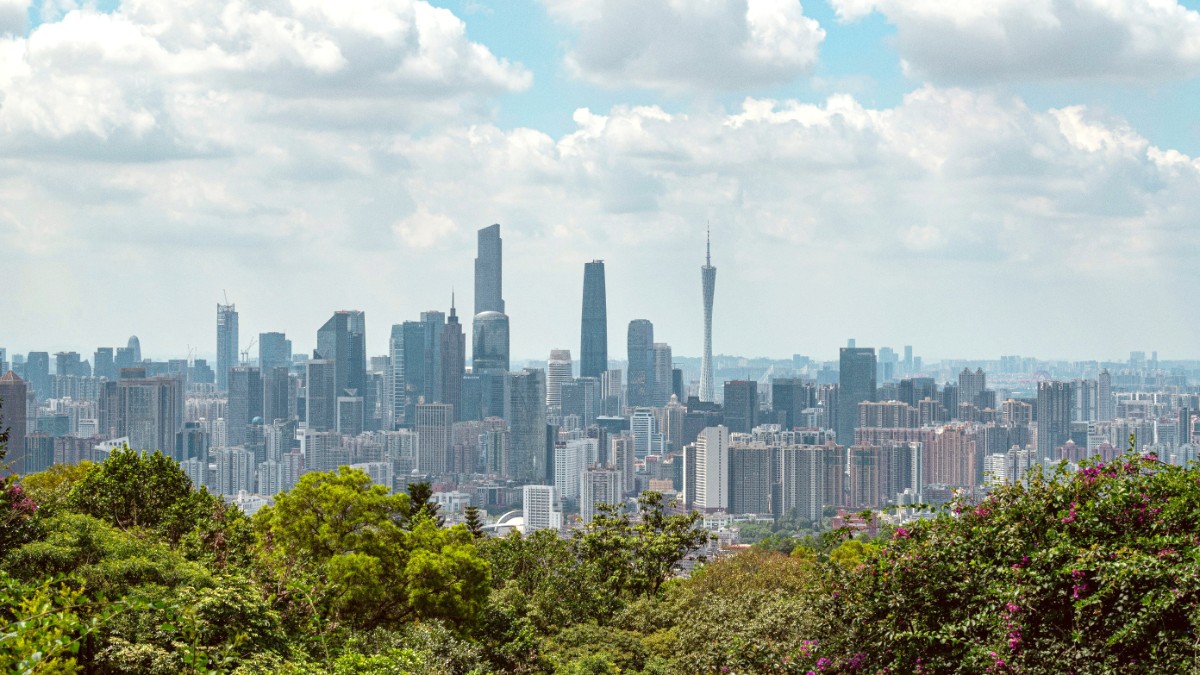
Guangdong, China
For those seeking rich culinary moments, historical findings, and modern city exploration, Guangzhou makes for a memorable trip. Prepare for sensory experiences, from its cuisine's complex tastes to the bustling markets and calm parks. This guide equips you with information for a satisfying and remarkable visit.
Guangzhou is in southern mainland China, the capital of Guangdong province. It lies north of the Pearl River Delta, a large, low-lying area created by the Pearl River (Zhujiang) and its tributaries. This position places Guangzhou approximately 120 kilometers (75 miles) north-northwest of Hong Kong and 145 kilometers (90 miles) north of Macau.
The city's closeness to the South China Sea, via the Pearl River, has always shaped its identity as a port and commercial center. The river flows through the city, offering scenic views and a path for commercial and leisure boats. The Pearl River Delta surrounding Guangzhou is a densely populated and economically active area, with cities like Shenzhen, Foshan, and Dongguan. This geographical situation makes Guangzhou a hub for transport, commerce, and culture in southern China. Its subtropical climate brings warm, humid conditions for much of the year, influencing local architecture, daily life, and food practices. The flat delta terrain contrasts with nearby hills, offering diverse natural settings within and around the metropolitan area.
Guangzhou has a history over 2,200 years old, making it one of China's oldest cities. It consistently served as a major port and a foundation of trade. During the Qin Dynasty, it became the capital of the Nanyue Kingdom, a regional power. By the Tang Dynasty, Guangzhou had become one of the world's largest seaports, drawing merchants from Arabia, Persia, and India. This early international interaction formed its cosmopolitan nature.
In the Ming and Qing Dynasties, Guangzhou became known as the sole port open to foreign trade for many years under the Canton System. This period saw the city become a central point for the profitable tea, silk, and porcelain trade with Europe and America. This special status led to the creation of distinct cultural elements, mixing Chinese and Western influences, especially visible in areas like Shamian Island. It was a place of revolutionary action, the origin of Dr. Sun Yat-sen's republican movement, and a city during the Opium Wars. These events left behind many memorials, ancestral halls, and colonial-era buildings. These structures are reminders of its past. The city's continuous evolution, from an ancient trading post to a modern industrial and commercial leader, mirrors China's wider journey. Its long history as a meeting point between China and the wider world gives Guangzhou a special character among Chinese cities.
Guangzhou's long history as one of China's oldest cities.
Became its capital during the Qin Dynasty.
One of the world's largest by the Tang Dynasty.
The only port for foreign trade during Ming and Qing Dynasties.
Origin of Dr. Sun Yat-sen's republican movement.
Guangzhou presents a lively image of contemporary China, deeply connected to its rich background.
Guangzhou is a major economic engine, a central point for manufacturing, trade, finance, and new ideas. It hosts the biannual Canton Fair, China's largest trade event, bringing business professionals from around the world. This economic pursuit fuels its growth and offers many services and comforts. As the core of Cantonese culture, Guangzhou is known for its distinct cuisine, language (Cantonese), and opera. It upholds customs while welcoming global aspects. The city actively protects its historical structures and cultural legacy, giving many chances for cultural immersion.
Guangzhou has an extremely well-working and broad public transport system. Its metro network makes most parts of the city easy to access. High-speed rail links it to major Chinese cities and Hong Kong, making it a good starting point for regional journeys. Guangzhou Baiyun International Airport is one of China's busiest, connecting the city globally. Food is central in Guangzhou. It holds fame as the origin of Cantonese cuisine, known for its focus on freshness, subtle tastes, and various cooking methods. Dim sum, roasted meats, and fresh seafood are culinary highlights. The city has a vast selection of dining experiences, from street food stalls to places with Michelin stars.
Guangzhou offers a multi-faceted travel experience. It combines the excitement of a fast-moving modern city with the charm of historical areas and the depth of an unique culinary tradition.
Guangzhou is a dynamic urban area with a significant population, a strong economy, and a rich cultural identity.
Its landmarks span from contemporary architectural achievements to historic sites, reflecting its continuous evolution. The city's efficient transportation and renowned cuisine are central to its appeal, all set within a humid subtropical climate.
A major hub for manufacturing, trade, and finance, hosting the renowned Canton Fair.
Modern marvels like Canton Tower alongside historical sites like Chen Clan Ancestral Hall.
A vast metro network and a busy international airport for easy access.
Over 15 million people live within Guangzhou's administrative area, positioning it among China's largest urban centers. The city experiences a humid subtropical climate, with hot, humid summers and mild, relatively dry winters. Autumn (October to December) typically presents the most pleasant weather for visitors.